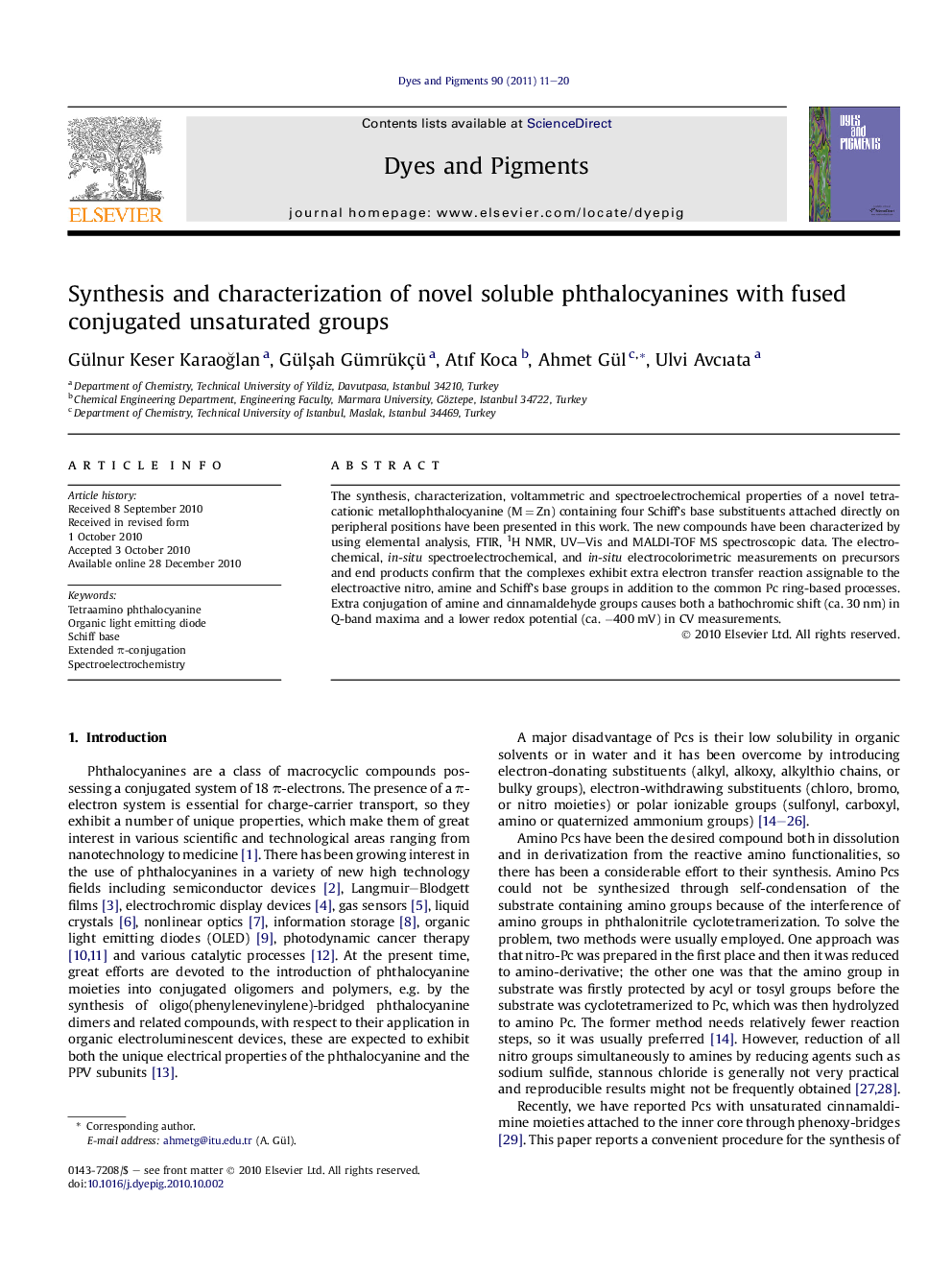| Article ID | Journal | Published Year | Pages | File Type |
|---|---|---|---|---|
| 177290 | Dyes and Pigments | 2011 | 10 Pages |
The synthesis, characterization, voltammetric and spectroelectrochemical properties of a novel tetra-cationic metallophthalocyanine (M = Zn) containing four Schiff’s base substituents attached directly on peripheral positions have been presented in this work. The new compounds have been characterized by using elemental analysis, FTIR, 1H NMR, UV–Vis and MALDI-TOF MS spectroscopic data. The electrochemical, in-situ spectroelectrochemical, and in-situ electrocolorimetric measurements on precursors and end products confirm that the complexes exhibit extra electron transfer reaction assignable to the electroactive nitro, amine and Schiff’s base groups in addition to the common Pc ring-based processes. Extra conjugation of amine and cinnamaldehyde groups causes both a bathochromic shift (ca. 30 nm) in Q-band maxima and a lower redox potential (ca. −400 mV) in CV measurements.
Research highlights► Zinc(II)phthalocyanine with four amino substituents on the periphery was achived by reduction of corresponding tetranitro derivative. ► Zinc(II)phthalocyanine with unsaturated cinnamaldimine units directly fused to tetrapyrrol cores are successfully synthesized by condensation of amino groups with 4-(dimethylamino)cinnamaldehyde. ► Presence of electroactive cinnamaldimine groups extended the redox richness of the phthalocyanine ring which is one of the desired properties of the metallophthalocyanines in electrochemical technological applications. ► Q bands of Pcs with conjugated cinnamaldimine groups show bathochromic shifts of about 27–32 nm.
